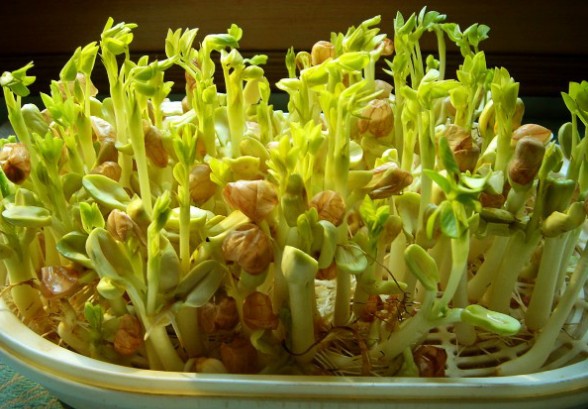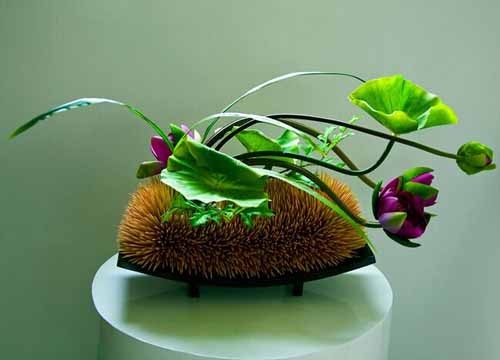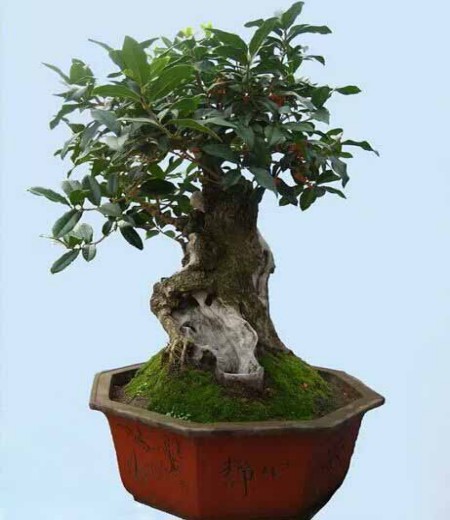Soilless cultivation techniques of sprouts and vegetables that can be used as bonsai
Recently, a group of volunteers from Nanjing Agricultural University walked into the bell tower community of Twin Towers, bringing residents the soilless cultivation technology of sprouts, which is the new favorite of the dining table, setting off a "green whirlwind" of organic life in the community.

A plate, a handful of seeds, sprayed with water, put on the balcony for a week or so, you can harvest fresh organic vegetables. "choose a handful of full-grained vegetable seeds, soak them in water for about 20 hours, then take them out, sprinkle them evenly into a plastic plate covered with gauze, cover them with gauze, and spray it with water every day. In about two days, the seeds will germinate and they will be harvested in about a week. " At the scene of the event, pots of "cute" sprouts earned enough attention from the residents. The volunteers also passed on the cultivation techniques of sprouts to the residents at the scene.
After a vivid explanation, the residents are rubbing their hands one after another, trying to cultivate a pot of sprouts of their own. Qian Rongrong, a resident who is already a flower lover, was pleasantly surprised by this activity: "for those of us who live in the city, eating our own vegetables seems to be an impossible dream." After participating in this activity, I learned to cultivate sprouts without soil. in the future, I will not only be able to eat my own vegetables, but also watch the seeds germinate and grow slowly, and enjoy the joy of being close to the green countryside. "
Organic sprouts, also known as sprouts, live vegetables, refers to the buds, buds or young stems cultivated with seeds or vegetative rhizomes as vegetables to eat, belonging to the primary ecological health vegetables. At present, the common varieties of sprouts are black bean seedlings, soybean seedlings, hollow cabbage, Turnip Sprouts, wheat seedlings and so on. As a result of breaking through the disadvantages of relying on chemical fertilizers and pesticides in traditional vegetable cultivation, hydroponic sprouts are increasingly welcomed by the general public.
Time: 2019-05-25 Click:
- Prev

Pot planting method of Lotus
The pot soil of lotus pot is best used after people dig pond mud in winter after freezing, or choose cat soil to plant lotus root from March to early April. Usually three more nodes are taken as one plant, and the buds and terminal buds in the nodes should be intact. When planting, cover 1cm to 2cm thick sand at the bottom of the basin, and then fill the soil for 10cm.
- Next

Planting techniques of Osmanthus fragrans
Potted sweet-scented osmanthus should be planted in spring or autumn, especially in cloudy or rainy days. Choose in a well-ventilated, well-drained and warm place with sufficient light or semi-overcast environment. Transplanting should play a good soil ball to ensure the survival rate. Planting soil is required to be acidic and avoid alkaline soil.
Related
- Fuxing push coffee new agricultural production and marketing class: lack of small-scale processing plants
- Jujube rice field leisure farm deep ploughing Yilan for five years to create a space for organic food and play
- Nongyu Farm-A trial of organic papaya for brave women with advanced technology
- Four points for attention in the prevention and control of diseases and insect pests of edible fungi
- How to add nutrient solution to Edible Fungi
- Is there any good way to control edible fungus mites?
- Open Inoculation Technology of Edible Fungi
- Is there any clever way to use fertilizer for edible fungus in winter?
- What agents are used to kill the pathogens of edible fungi in the mushroom shed?
- Rapid drying of Edible Fungi

